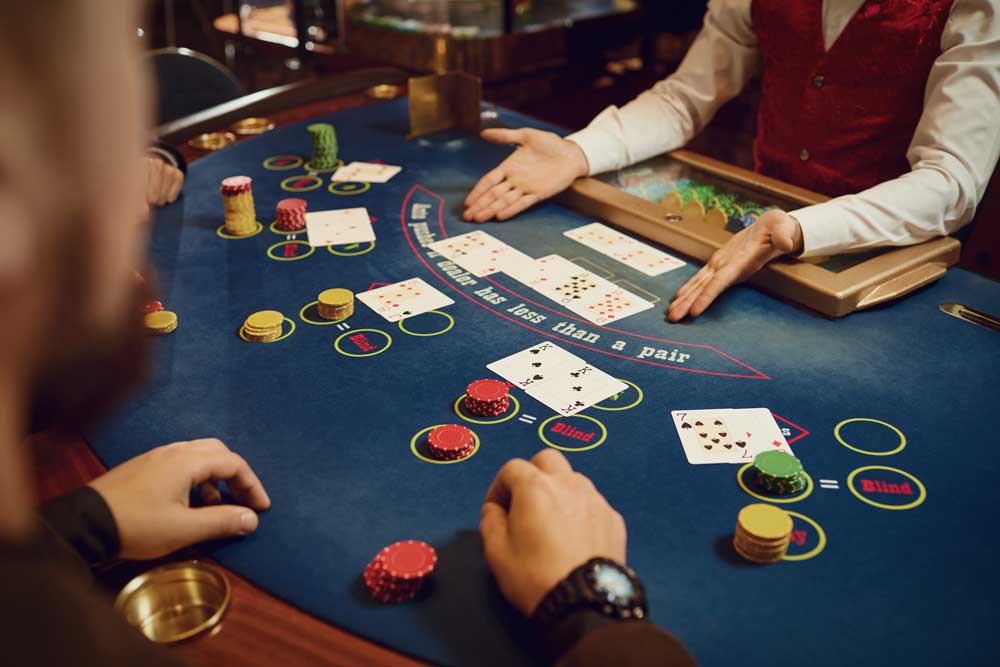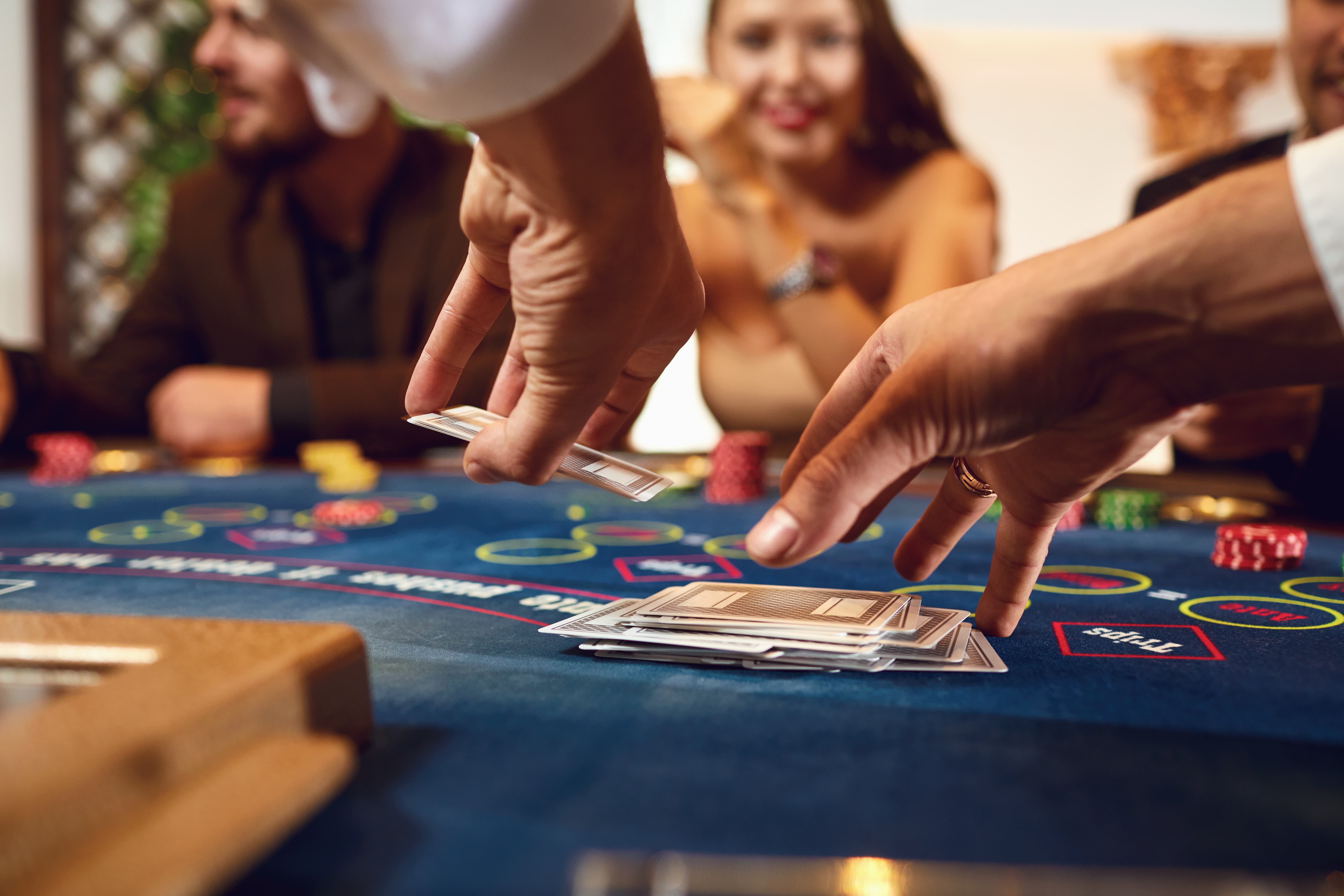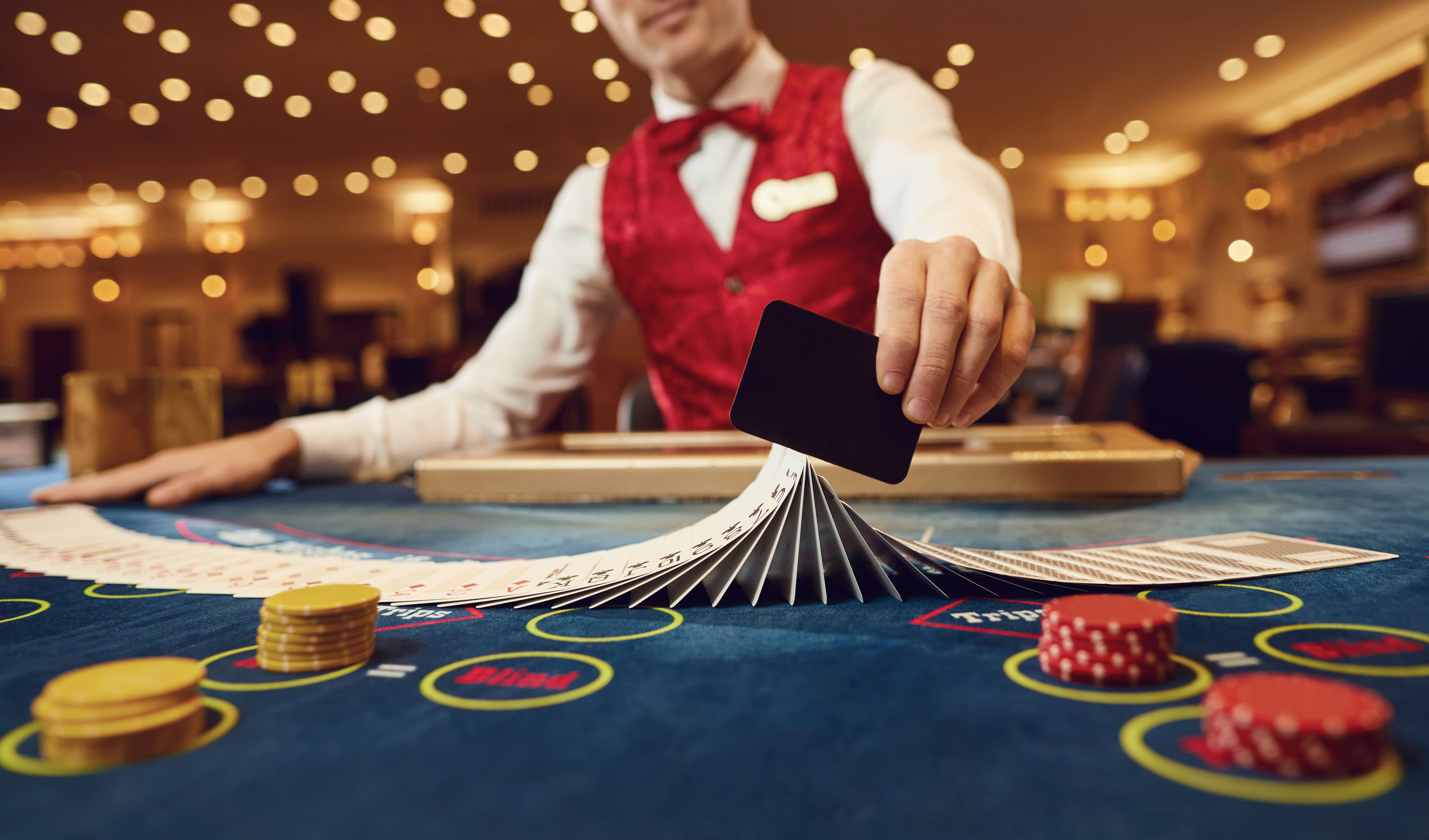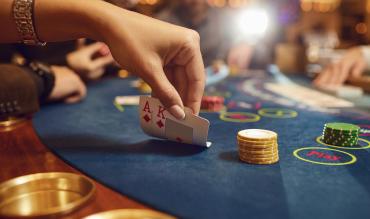Updated on March 18, 2025
In the world of casino table games, Ultimate Texas Hold'em (UTH) stands out as one of the most popular poker variants. While games like roulette and blackjack have long dominated the casino floor, UTH has carved out its own dedicated following. This article explores the optimal Ultimate Texas Hold'em strategy and analyzes the Ultimate Texas Holdem house edge to help you make informed decisions at the table.
The Basics of Ultimate Texas Hold'em
Ultimate Texas Hold'em shares similarities with traditional poker but includes unique betting structures that affect strategy. Unlike the unpredictable spin of a roulette wheel, UTH combines skill and probability in a way that rewards strategic thinking. Before diving into advanced concepts, let's review the basic rules:
- The player makes equal bets on the Ante and Blind.
- Five community cards are dealt face down.
- Each player and the dealer receive two face-down cards.
- Players then choose to either check OR make a Play bet of 3x or 4x their Ante.
- The dealer reveals the first three community cards (the "Flop").
- Players who checked previously can either check again OR make a Play bet of 2x their Ante.
- The dealer reveals the final two community cards (the "Turn/River").
- Players who haven't made a Play bet can either fold OR make a Play bet equal to their Ante.
- The dealer reveals their cards and announces their best five-card hand.
- The dealer needs a pair or better to "qualify."

Now what? Well, either the dealer qualifies or they don't. The player beats, ties or loses to the dealer. Either the player's hand is good enough to qualify for a "Blind" bonus payout, or it isn't. The following table hopefully clarifies all of these possibilities and shows the payouts in every case:
| Wager Result | ||||
| Winning Hand | Dealer Qualifies? | Ante Pays | Play Pays | Blind Pays |
| Player | Yes | 1-to-1 | 1-to-1 | Win |
| Player | No | Push | 1-to-1 | Win |
| Dealer | Yes | Lose | Lose | Lose |
| Dealer | No | Push | Lose | Lose |
| Tie | N/A | Push | Push | Push |
The Blind bet pays according to hand strength when the player wins, with payouts ranging from 1:1 for a Straight to 500:1 for a Royal Flush. The complete pay table for the Blind bet is:
- Royal Flush: 500-to-1
- Straight Flush: 50-to-1
- Four of a Kind: 10-to-1
- Full House: 3-to-1
- Flush: 3-to-2
- Straight: 1-to-1
- All other hands: Push
These payouts form a crucial component of the game's overall house edge and significantly impact Ultimate Texas Hold em strategy decisions.
Ultimate Texas Hold'em Strategy
Ultimate Texas Hold'em is one of the most popular novelty games in the market. For that reason, it is important to understand the multitude of ways that UTH may be vulnerable to advantage play. Many of my recent posts have concerned some of these possibilities. But the computations are tedious. It took my computer 5 days to run the cycle where the AP sees one dealer hole card (see this post). Then my computer spent 8 days analyzing the situation where the AP sees one dealer hole card and one Flop card (see this post). After that, my computer crunched hands for just over 2 days, considering computer-perfect collusion with six players at the table (see this post). After all of this time spent on more advanced plays, I decided to take a step back to compute the ultimate texas holdem house edge off the top, using perfect basic strategy and no advantage play. It took my computer three days to run the pre-flop cycle and another two days to run the Flop cycle. Finally, I have some basic ultimate texas hold'em strategy data to present.

After extensive combinatorial analysis of all 169 unique starting hands, evaluating both the edge for checking and raising 4x, I've reached several key conclusions. The analysis accounted for hand equivalence through suit permutations. For example, because the starting hand (2♣7♦) is equivalent to (2♥7♠), only one representative configuration needed to be analyzed.
In particular:
- The house edge for UTH is 2.18%.
- Players should check pre-flop on 62.29% of the hands.
- Players should raise 4x pre-flop on 37.71% of the hands.
- Players have a pre-flop edge over the house on 35.29% of the hands.
- The player should never raise 3x pre-Flop.
Ultimate Holdem Strategy: Pre-Flop Decisions
Developing a solid ultimate texas hold em strategy begins with pre-flop decisions. Based on comprehensive analysis, here's the optimal approach:
When to Raise 4x Pre-Flop:
- Any pair of 3's or higher
- A2 through AK (suited or unsuited)
- K5 through KQ (suited or unsuited)
- Q8 through QJ (suited or unsuited)
- JT (suited or unsuited)
- Suited K2, K3, K4
- Suited Q6, Q7
- Suited J8, J9
For all other starting hands, the correct play is to check. Note that raising 3x pre-flop is never the optimal choice, despite being an option in the game.
Ultimate Holdem Strategy: Flop Decisions
A Flop decision to check or raise 2x is only possible if the player checked pre-flop. By reference to the pre-flop strategy above, it turns out there are exactly 100 equivalence classes of starting hands where the player checked pre-flop. I re-ran my UTH basic strategy program to consider each of these 100 hands and each possible flop that can appear with that starting hand. For each starting hand where the player checked pre-flop, there are combin(50,3) = 19,600 Flops to consider. Thus, altogether, I had to evaluate the Flop decision to check or raise 2x for 100 x 19,600 = 1,960,000 situations. Shackleford's simplified approach to flop decisions sacrifices minimal expected value (typically less than 0.4%) while drastically reducing the cognitive burden on players. This practical approach to ultimate holdem strategy represents an excellent balance between optimality and usability.
When to Raise 2x on the Flop:
- Two pair or better
- Any hidden pair (except pocket 2's)
- Four to a flush with a kicker of Ten or higher

While this simplified strategy isn't perfect (it misses some subtle opportunities), the difference in expected value is minimal. For example, with (8♣J♦) against a flop of (2♣3♣Q♣), the optimal play is to raise 2x despite having only four to a flush with an 8 kicker. This likely stems from the combined possibilities of runner-runner straight draws, flush draws, and pairing possibilities. However, checking in this situation costs only 0.377% in expected value – a small price for strategic simplicity.
Ultimate Holdem Strategy: Turn/River Decisions
The final decision point comes after seeing all five community cards. At this stage, you must decide whether to fold (surrendering your Ante and Blind bets) or make a Play bet equal to your Ante.
One can certainly use Shackleford's very easy Turn/River strategy for that final decision:
- Raise 1x when you have a hidden pair; or
- Raise 1x when there are fewer than 21 dealer outs that can beat your hand
- Otherwise, fold
This derives from the mathematics of expected value. When you fold, your EV is -2 (losing your Ante and Blind). When you raise and face N potential dealer "outs," your expected value equals 1-4p, where p is the probability the dealer beats you. For raising to be correct, this value must exceed -2, which occurs when the dealer has 20 or fewer outs to beat your hand.
Mathematical Derivation of the "20 Outs" Rule
My complete method here, were I to do it, would be to post spreadsheets containing computer-perfect play so that the reader could devise his own turn/river strategy. Of the 1,960,000 flop possibilities mentioned above, exactly 1,273,842 of them correspond to the player checking on the flop. Each of these checking possibilities yields an additional combin(47,2) = 1,081 Turn/River hands to complete the board, where the player has to then choose to either fold or raise 1x on each. That is, the complete spreadsheet analysis of the Turn/River decision would mean posting a total of 1,960,000 x 1,081 = 1,377,023,202 hands for the reader to consider.
Yeah, well ... at any rate, for the curious, here is my derivation of Shackleford's result concerning playing hands with 20 or fewer dealer outs.
When you fold, your expected value is clearly -2 units (losing both Ante and Blind).
If N represents the number of dealer outs that can beat your hand, the probability of the dealer's first card being an out is p₁ = N/45. For the dealer's second card, if their first card missed, they typically have approximately 3 additional "pair outs" plus potential runner-runner outs. This gives a second-card probability of approximately p₂ = (N+4)/44.
The overall probability of the dealer beating you becomes: p = N/45 + [(45-N)/45] × [(N+4)/44]
Simplifying this equation: p = (-N² + 85N + 180)/(45×44)
Note that if the dealer doesn't hit an out, then he won't qualify. It follows that the EV for the player who raises 1x on the Turn/River bet is:
EV = p*(-3) + (1-p)*(1) = 1 - 4p.
We make the raise whenever EV > -2. That is, 1 - 4p > -2. Solving for p gives
p
That is, the player raises 1x when his chance of beating the dealer is 25% or higher.
Substituting our expression for p and solving the resulting quadratic equation: N² - 85N + 1305 > 0
This yields roots of approximately 64.9 and 20.1. Since the number of outs must be positive and must satisfy the inequality, the solution is N ≤ 20.
This mathematical foundation gives us the practical "fewer than 21 dealer outs" rule for Turn/River decisions in ultimate texas hold em strategy.
Understanding the Ultimate Texas Holdem House Edge

After extensive computational analysis, we can quantify the house edge for Ultimate Texas Hold'em:
- Computer-perfect strategy: 2.18497%
- Shackleford's practical strategy: approximately 2.43%
- Grosjean's strategy (from Exhibit CAA): 2.35%
This house edge is quite favorable compared to many casino games. For comparison, American roulette odds heavily favor the house with a 5.26% edge due to the double zero on the roulette wheel. Even single-zero European roulette maintains a 2.7% house advantage.
The moderate house edge makes Ultimate Texas Hold'em attractive to strategic players. While not as favorable as blackjack strategy with its potential sub-1% house edge (under optimal rules), UTH offers better odds than most other poker-based table games and nearly all blackjack side bets.
Ultimate Texas Hold em Strategy - Final Thoughts
Ultimate Texas Hold'em rewards strategic play while offering a reasonable 2.18-2.43% house edge when using optimal ultimate texas hold'em strategy. While perfect play requires complex calculations, simplified approaches like Shackleford's provide excellent results for practical use. By applying the strategies outlined above, you'll minimize the ultimate texas holdem house edge and improve your chances at the tables.
Remember to play responsibly and enjoy the strategic depth UTH offers compared to many other casino games.
Originally published on June 1, 2015


